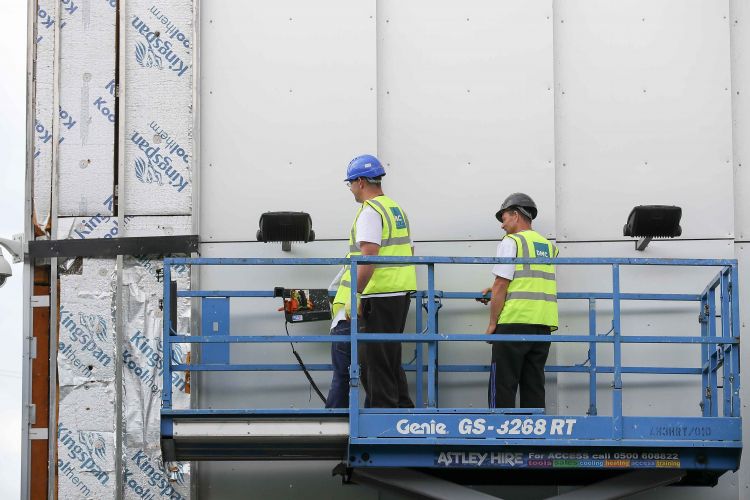Government cladding ban ignores most workplaces

The government has finally agreed to ban the use of combustible cladding in high-rise residential buildings, schools and hospitals, but has, once again ignored offices and other workplaces.
In an announcement yesterday, the Communities Secretary said that “combustible materials will not be permitted on the external walls of new buildings over 18 metres containing flats, as well as new hospitals, residential care premises, dormitories in boarding schools and student accommodation over 18 metres.” Schools over 18 metres which are built as part of the government’s centrally delivered build programmes will also not use combustible materials in the external wall.
What this means is that developers will still be able to build office blocks, stadiums, concert halls and, bizarrely, private schools, with combustible cladding. This makes absolutely no sense at all.
The government also announced that it will give councils the power to force private housing providers to make unsafe cladding safe on residential hi-rise buildings. This is well overdue, as some private landlords have not even tried to identify which buildings have cladding and insulation systems that have failed fire safety tests, let alone taken steps to make them safe. But once again, there is no mention of workplaces.
After the Grenfell fire tragedy, the government advised councils and housing associations to check all cladding. That was later extended to hospitals and schools. At the time the TUC said that guidance should be given on all high-rise buildings, but the government has still not done that.
In almost every city centre in the UK dozens of office blocks built after the 1960s have been re-clad and could potentially be a firetrap, while more recent office buildings often had combustible cladding installed when they were built. There is widespread acknowledgement that the building regulations in place during the decades when all this cladding was being done were not fit for purpose. Yet the government has not said one word about workplaces such as offices in the year and a half that has passed since the tragic events at Grenfell.
No one knows how many office blocks have got combustible cladding installed. It has been reported that the company that installed the cladding at Grenfell Tower also installed cladding on several office buildings, including Norwich town hall and police station.
But to get a scale of the problem it is worth looking at a country where they did survey all multi-storey buildings after the Grenfell fire – New Zealand. There, the government ordered the three main city councils to check all high-rise buildings, and this showed that the problem of combustible cladding was widespread. In Christchurch a survey found that the majority of buildings with combustible cladding were office blocks. A large number of office blocks were also identified in Auckland, including a sports stadium and in Wellington.
There is no doubt that hundreds, if not thousands of workplaces in the UK could have some form of combustible cladding. Yet despite the obvious fire risk, the government has ignored the issue, even allowing developers to continue to use it.
Not only should the government be banning the use of combustible cladding in all new high-rise buildings, it should be ensuring that it is removed from all buildings over 18 metres, not only housing blocks, schools and hospitals.
The TUC has published advice for union representatives on fire safety which you can find here.
Stay Updated
Want to hear about our latest news and blogs?
Sign up now to get it straight to your inbox

